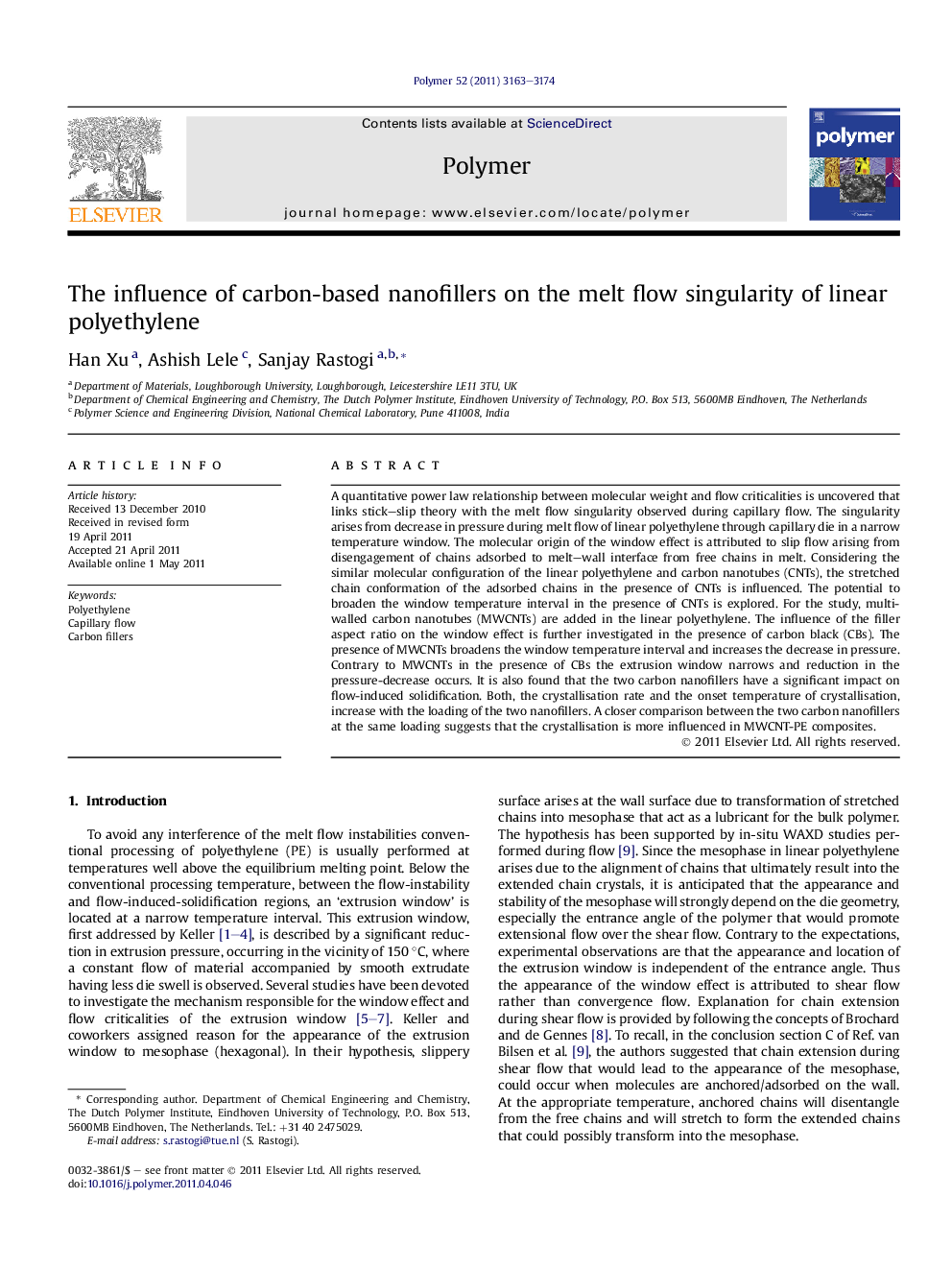| Article ID | Journal | Published Year | Pages | File Type |
|---|---|---|---|---|
| 5184505 | Polymer | 2011 | 12 Pages |
A quantitative power law relationship between molecular weight and flow criticalities is uncovered that links stick-slip theory with the melt flow singularity observed during capillary flow. The singularity arises from decrease in pressure during melt flow of linear polyethylene through capillary die in a narrow temperature window. The molecular origin of the window effect is attributed to slip flow arising from disengagement of chains adsorbed to melt-wall interface from free chains in melt. Considering the similar molecular configuration of the linear polyethylene and carbon nanotubes (CNTs), the stretched chain conformation of the adsorbed chains in the presence of CNTs is influenced. The potential to broaden the window temperature interval in the presence of CNTs is explored. For the study, multi-walled carbon nanotubes (MWCNTs) are added in the linear polyethylene. The influence of the filler aspect ratio on the window effect is further investigated in the presence of carbon black (CBs). The presence of MWCNTs broadens the window temperature interval and increases the decrease in pressure. Contrary to MWCNTs in the presence of CBs the extrusion window narrows and reduction in the pressure-decrease occurs. It is also found that the two carbon nanofillers have a significant impact on flow-induced solidification. Both, the crystallisation rate and the onset temperature of crystallisation, increase with the loading of the two nanofillers. A closer comparison between the two carbon nanofillers at the same loading suggests that the crystallisation is more influenced in MWCNT-PE composites.
Graphical abstractThe figure shows drop in pressure during flow of the neat polymer (PE-A), linear polyethylene, through capillary rheometer. In the presence of spherical particles of carbon black (0.6Â wt%CB) the observed melt flow singularity of the linear polyethylene diminishes, whereas the singularity becomes more pronounced in the presence of carbon nanotubes having high-aspect-ratio (0.6Â wt% MWCNT).Download full-size image
